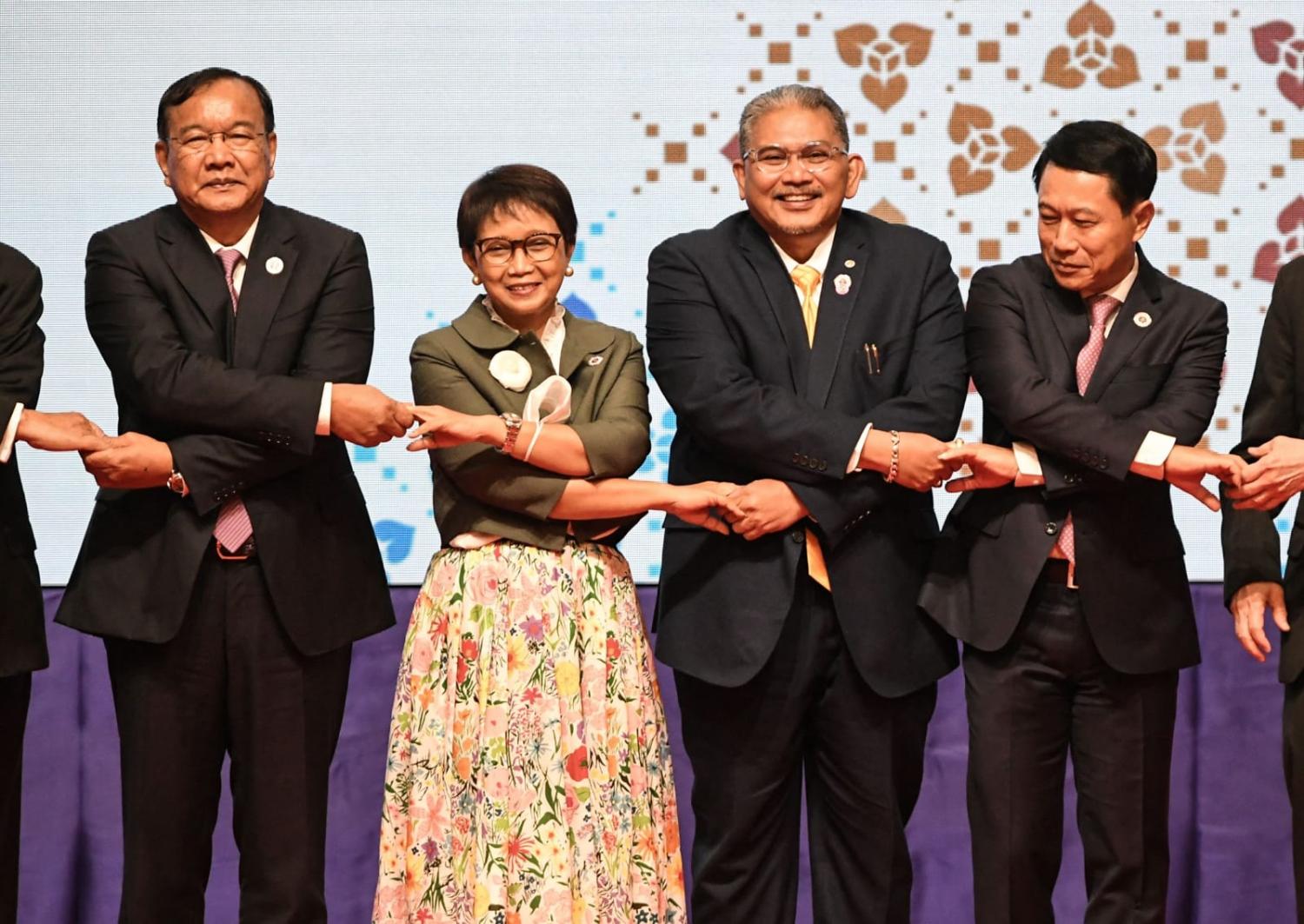The cancellation of US President Joe Biden’s visits to Australia and Papua New Guinea raised predictable questions about the ability of the United States to focus on the Indo-Pacific region, given domestic and global preoccupations. Yet what such commentaries often miss is that the United States is already operating at a much lower tempo of high-level diplomacy in the Indo-Pacific than other major players – at least as far as quantity is concerned.
China is Asia’s most active diplomatic player when counting handshakes at meetings between foreign ministers or national leaders. China held 93 foreign minister- or leaders-level meetings last year. Japan followed as a close second, while Indonesia, having hosted the G20, ranked third.
This finding emerges from analysing data for the Lowy Asia Power Index, which has carefully tracked defence and diplomatic interactions among 25 regional countries in 2022.* The findings, set out in the chart below, also reveal China’s diplomacy to be among the most diversified, meeting with all included countries at least once. The energetic (now former) foreign minister Wang Yi powered across the region and was the top interlocutor for seven counterparts (Mongolia, Nepal, Pakistan, Papua New Guinea, Philippines, Russia and Thailand). Wang held seven bilateral meetings with his Pakistani and Russian opposite numbers and sat down five times with Indonesian foreign minister Retno Marsudi.
By contrast, Japan’s diplomacy was led by Prime Minister Fumio Kishida. (Foreign Minister Yoshimasa Hayashi was only the region’s seventh busiest foreign minister). Kishida meet counterparts from South Korea and the United States six times each, two of these trilaterally. Japan was ranked as highest for its meeting count with other nine countries: Australia, Indonesia, New Zealand, the Philippines, South Korea, Sri Lanka, Thailand and the United States.
Marsudi led Indonesia’s efforts. On nine occasions she met with Singapore’s Vivian Balakrishnan, marking this as the region’s most intensive diplomatic pairing. Marsudi met Australia’s Foreign Minister Penny Wong six times – Wong came to office in May 2022 – and her Russian and Chinese counterparts five times each. Indonesian President Joko Widodo was less active, meeting just over half his regional counterparts at least once in 2022.
The United States ranked seventh as the most active diplomatic player in Asia (after Australia, India, and Vietnam). US Secretary of State Antony Blinken met with around two thirds of his counterparts at least once. His engagement, and that of Biden, was weighted towards Quad countries, evident on the chart below. Quad countries accounted for around half of all top-level US diplomacy, while treaty ally South Korea also featured prominently. Together, Blinken and Biden held 19 meetings with counterparts from Southeast Asia in 2022, less than half of China’s 40.
When it comes to defence diplomacy, however, the Asia Power Index reveals a different picture. Our defence diplomacy data set includes combined training between armed forces along with defence dialogues at senior official or ministerial level. Across both types of activity, the United States remains far and away the most active player, holding 210 combined trainings and 243 defence dialogues with regional counterparts, and holding at least one activity with almost every country in the region. The most frequent partner was Japan, accounting for around half of all combined trainings and one third of its defence dialogues. Next followed South Korea, Australia, the Philippines, and Singapore.
As the next chart illustrates, Japan, followed by Australia, are the region’s next most active defence diplomacy players. In Japan’s case, this is in part driven by activity with the United States, which accounted for roughly 70 per cent of Japan’s combined trainings. However, Japan was also the most important combined training partner for eight other regional countries (Cambodia, India, Laos, Mongolia, Pakistan, Papua New Guinea, Timor-Leste, and Vietnam), highlighting its growing role as a provider of security assistance in the Indo-Pacific.
China’s defence diplomacy remains far more limited. China ranked only 14th in the region in 2022 when defence dialogues and combined trainings are aggregated. Russia was its top partner for combined trainings, followed by Pakistan. Cambodia was China’s most frequent partner for defence dialogues.
Despite its lagging military capability, Indonesia’s defence diplomacy was also among the region’s most active, holding the most combined trainings with Australia, Singapore and the United States, and was itself an important partner for Malaysia. Philippine defence diplomacy has become more active since the reaffirmation of the Visiting Forces Agreement with the United States in 2021.
Of course, diplomacy is about outcomes as well as inputs. A flurry of poorly prepared meetings may yield less than a single carefully orchestrated annual interaction. Yet in many cases the two are correlated. Would the breakthrough in South Korea-Japan relations in 2023 have happened without consistent high-level diplomacy between the two countries in 2022? Likewise, continued common purpose among the Quad is supported by the strength of individual bilateral relationships. Our data set provides an entry point to understanding the complexity of diplomacy in the region.
*This analysis covers the 26 countries included in the Asia Power Index, except for North Korea and Taiwan, and Timor-Leste. For more original data on patterns of association and alignment between countries of the region, see the Asia Power Index’s Network Power Map.

